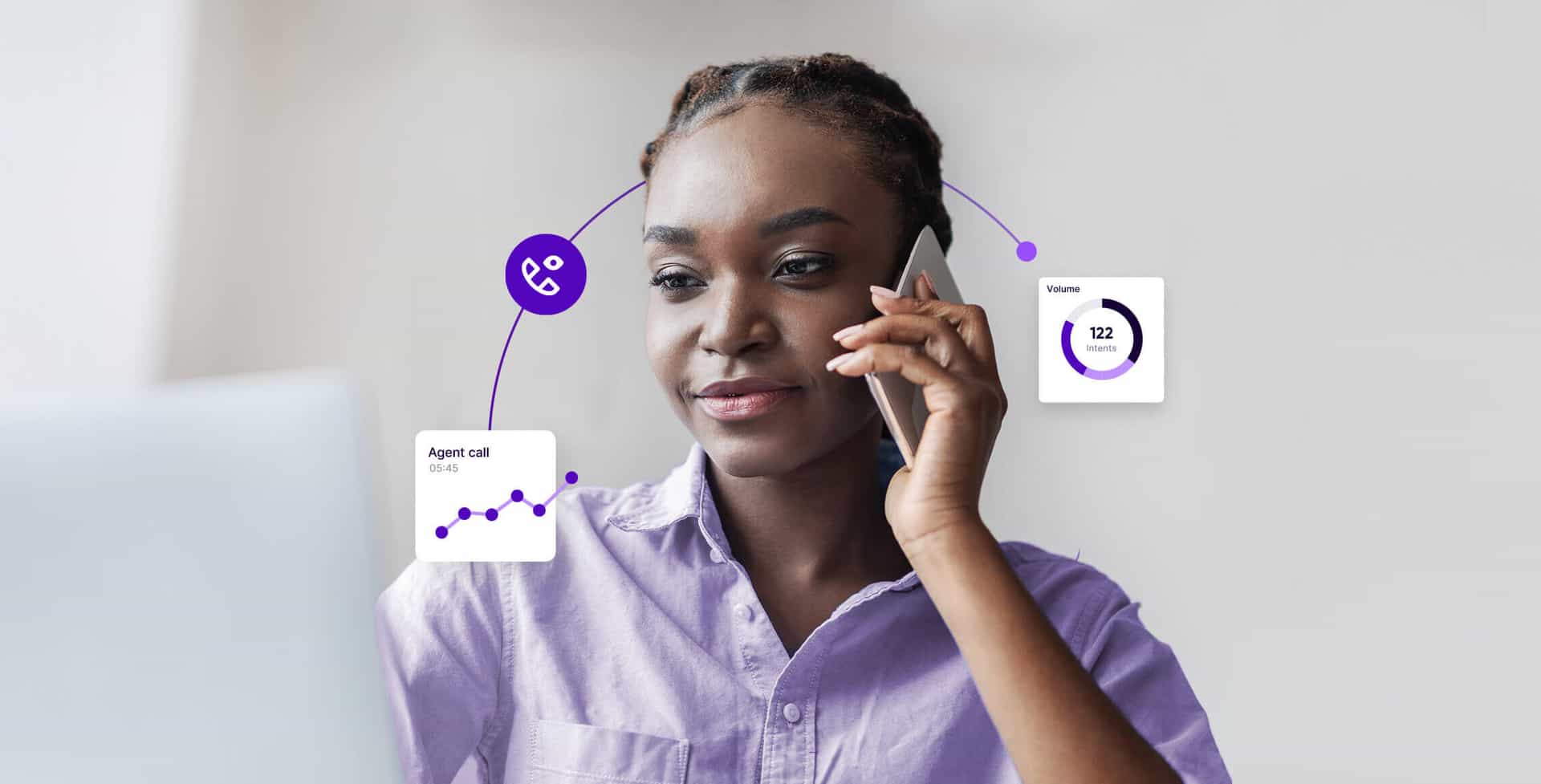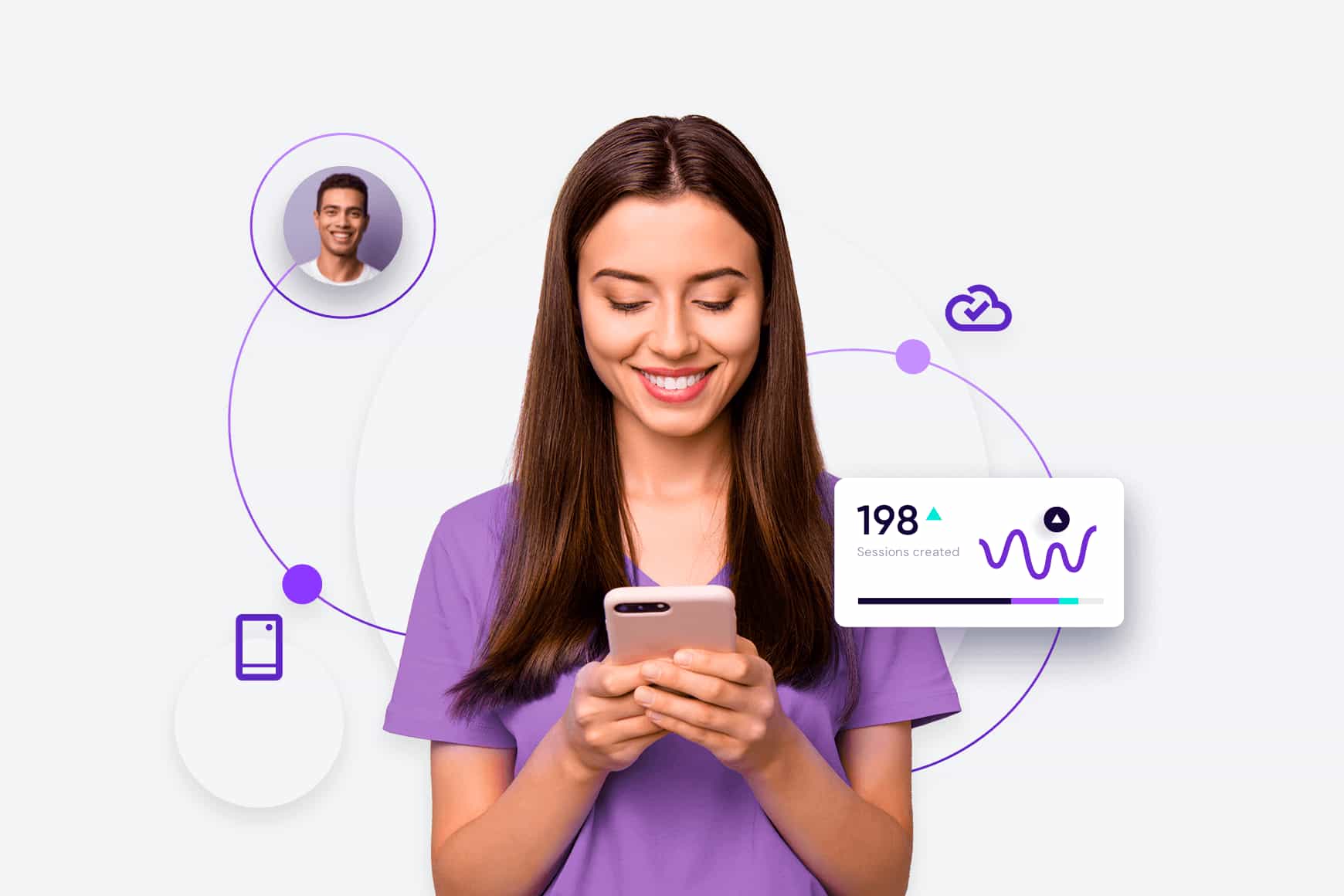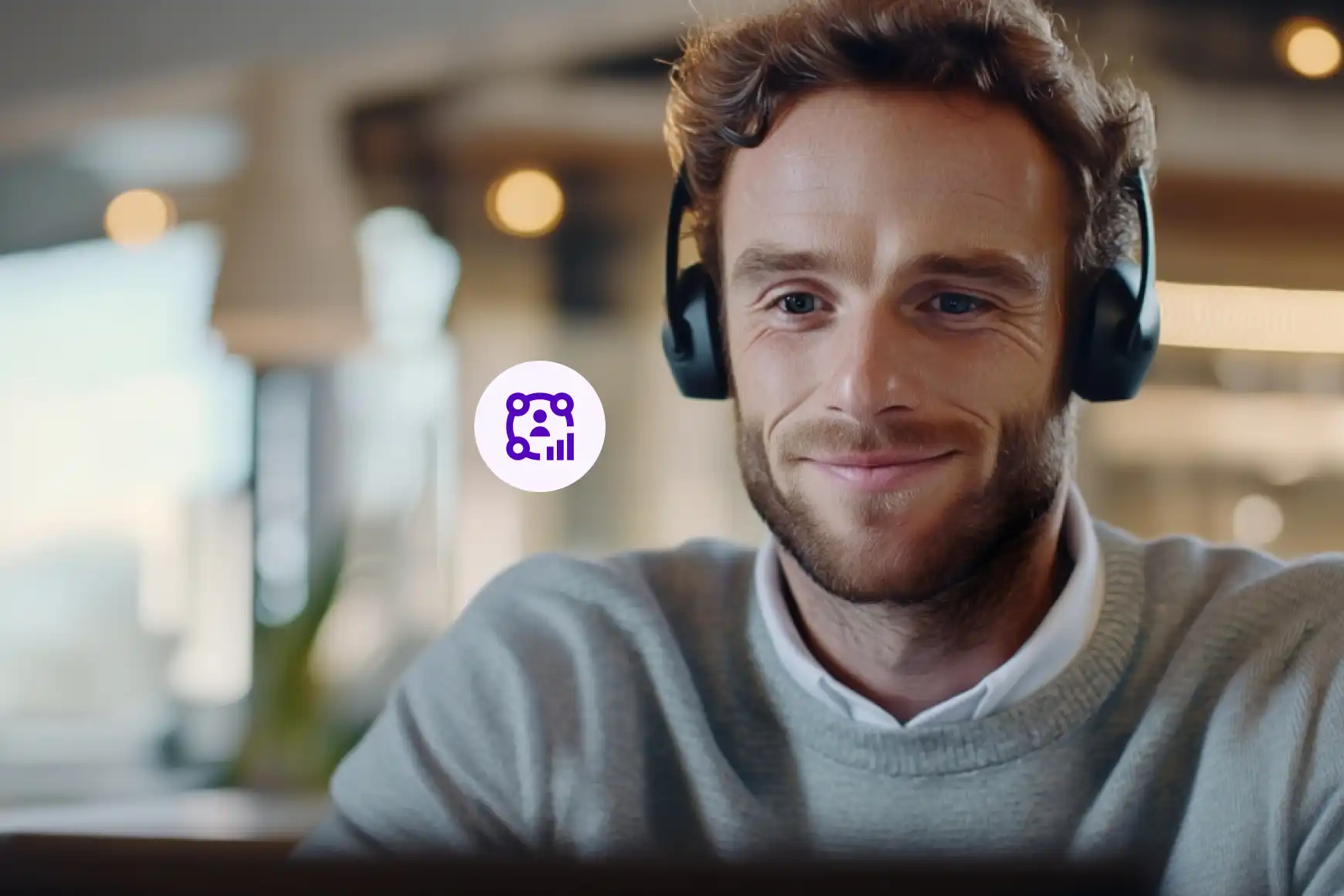4 innovative ways to leverage call monitoring for increased customer satisfaction

By Celia Cerdeira
0 min read

Call monitoring is one of the most common and effective ways to understand your center’s training and quality needs. However, call center monitoring is just a tool; the power is in how you use it.
An effective customer experience strategy hinges on training, coaching, and supporting your agents during each and every interaction they have. When you have strong call monitoring practices, you can do this without straining your management and supervision team.
Talkdesk is dedicated to helping organizations provide the highest-quality customer support touchpoints. Let’s take a look at common call monitoring techniques, including frequently-overlooked ways to leverage call monitoring technology.
Benefits of call monitoring.
Customers, agents, and management at every level can experience the benefits of call monitoring. To start, you need a clear picture of your current training efforts and other KPIs.
With those firmly in place, managers can identify problem areas quickly and systematically.
This leads to a decrease in operating costs with an increase in customer satisfaction, engagement, and loyalty.
Management can access both historical and real-time data. This means they have an understanding of broad trends in contact center performance, like the efficiency of current operational processes, adherence to compliance standards, and opportunities for agent training and development.
Agents can use the data and manager feedback to improve first call resolution rates, promptly address any performance concerns, and pinpoint areas where they need more support.
Accessing growth opportunities will lead to higher employee satisfaction and a more engaged workforce with less turnover.
The largest, overarching benefit of call monitoring? An excellent customer experience.
We find that contact centers maintaining call monitoring and review processes are able to resolve customer queries quickly and seamlessly. Many also find an uptick in agent morale and performance, as they have the necessary support needed to deliver truly exceptional assistance.
Four call monitoring software features–and how to use them.
Call monitoring is usually a standard part of cloud contact center solutions. However, the quality and implementation can vary.
Some solutions require that humans do the heavy lifting, like data sorting and entry. But that is time-consuming and expensive.
Powerful, AI-driven contact center monitoring tools allow you to do much more than just listen to calls. They simplify the process of quality assurance monitoring and allow agents and managers to see everything in easy-to-understand dashboards and reports
The best call monitoring software has all of the following features.
1. Double-listening and real-time monitoring from a distance.
Double-listening is usually reserved for inexperienced agents and those who need special support. Occasionally, call monitoring will include random quality assessments.
The challenge with double-listening is its time and labor requirements. Giving effective feedback to agents requires the manager to be fully engaged with call monitoring and give one-on-one feedback afterward. This naturally keeps them away from other high-value duties.
With Talkdesk Live™, you can display real-time, center-wide metrics anywhere–including where your agents can see them. Talkdesk Live allows management to give feedback to all agents when they see a trend, rather than requiring them to provide the same feedback to each person individually.
2. Whispering and AI-integrated support.
Like double-listening, whispering is time-consuming for management and requires that they work with just one agent at a time.
Providing tips and guidance is important for increasing first-call resolution, but whispering isn’t always the most practical way to offer that.
Successful contact center agents should be the rule, not the exception.
That’s why Talkdesk has integrated conversational AI with its call monitoring capabilities. Custom prompts help each agent based on the specific conversation they are having, the context of the call, the customer profile data, and other relevant information. The AI can advise the agent on the next best steps and automatically offer suggested scripts.
With these features, your managers can continue observing at a high level instead of getting bogged down with personal feedback on hundreds of calls a day.
3. Call barging and passing context.
Call barging is often a step in the escalation process. Your management, your agent, and your customer are all speaking together to resolve an issue.
The question is, how long will it take to get your manager up to speed?
This can be time-consuming and frustrating for the caller, especially if they are required to wait on hold and re-explain their problem. Contact center software that has fully-trained AI can quickly pass the context and conversation summary to a manager and/or any subsequent agents that the customer might be transferred to.
4. Call recording and automatic summary.
Call recording can allow outside departments and teams to participate in the benefits of call monitoring. For example, your marketing team can review recordings to understand the customers’ problems, discover how customers talk about your products or services, access key information about the success of specific campaigns, and more.
Within your contact center, call recording can also be used in agent training exercises.
Meanwhile, agent-generated summaries are usually a required part of the post-call work. They are helpful but can be biased, inconsistent, and lead to long wrap-up times. Talkdesk solves this problem by utilizing the large language models powering ChatGPT to automatically summarize the call the moment an agent disconnects. This results in an easy-to-understand, standardized summary format and the same consistent insights about past calls.
Call monitoring best practices and KPIs to incorporate.
There are many benefits to call monitoring, but in order to get a quality output, a few best practices must be followed.
KPIs like average handling time, average pickup time, and retroactive customer satisfaction scores only provide part of the picture. While they are an important part of the feedback process, call monitoring provides you with a deeper understanding of agents’ performance–at both an individual and team level. It takes away the guesswork and subjectivity of trying to identify ways to boost productivity and customer satisfaction in the future.
Here are a few tips for using real-time and retroactive call monitoring data to offer strong, actionable feedback:
- Tie your feedback to a performance goal, corporate value, departmental objective, or remediation plan.
- Supplement your feedback with data and excerpts from the call, so the agent gets complete clarity on the areas they are expected to improve.
- Collaborate with your agents to create an action plan for solving problems or improving KPIs.
- Log the feedback for each agent so everyone can keep track of performance.
Important legal notes for call monitoring.
United States federal law requires one-party consent, meaning you do not technically need to get consent from the caller to record them. That being said, some state laws require consent from the caller before you can monitor or record a conversation with customers.
International laws vary by country.
It is also important to note that most privacy and consent laws are based on the location of the customer, regardless of where the company is based, or where the contact center may be located.
To keep your company legal, safe, and respectful we recommend adding a pre-recorded statement indicating that all parties who remain on the call may be recorded. You can also require a keypad entry to confirm consent, though that may not be necessary.
Ready to implement call monitoring software?
Consistent agent performance and effectiveness are needed to handle increasing call volume from your growing customer base.
You don’t have to sacrifice quality as quantity increases. This means your agents need swift, concrete, and actionable feedback with real-world examples.
The Talkdesk call monitoring features are designed to maximize your productivity and customer satisfaction while decreasing operating costs and agent churn.
When your customers have their problems handled quickly and with ease, they walk away with a positive impression of your company. And when your agents receive real-time feedback and support, they can offer exactly that kind of experience.
Best of all, your management team doesn’t have to sacrifice hours a day to provide this kind of personalized employee guidance.
Ready to boost your contact center agent productivity and optimize your customer experience? Learn more about the Talkdesk interaction recording feature and request a demo for your organization.

FAQs.
What is call monitoring?
Call monitoring refers to the process of listening to calls to improve customer service. It’s usually done by contact center supervisors or managers, who will listen to live or recorded calls to assess the quality of customer service. Then, supervisors can pinpoint and act on agents’ training needs.
Call monitoring can be one of the best methods to ensure that your contact center workforce is effective, compliant, and providing excellent service.
What are the types of call monitoring?
Call monitoring is generally split into two main types: call recordings and live call monitoring, in which a manager listens in as the call is happening. These actions are enabled by call monitoring software, which connects to your business phone system and makes quality control seamless.
How much does it cost to use call monitoring?
With Talkdesk, call monitoring is part of our Workforce Engagement Management solution, and it is fully integrated with Talkdesk Quality Management, ensuring supervisors can immediately start helping agents improve their skills. It is included as part of the Talkdesk CX Cloud Elevate and CX Cloud Elite editions.





